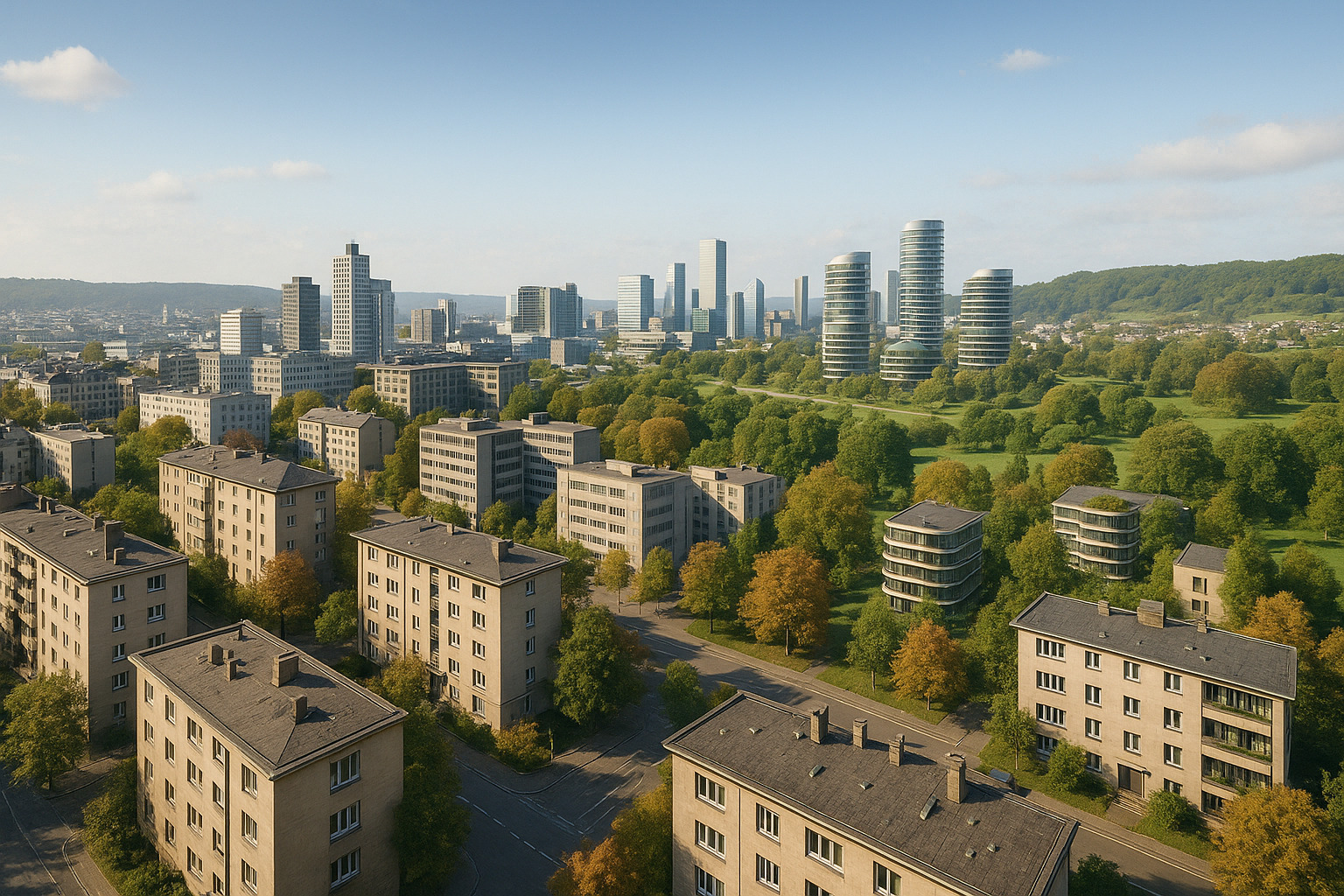
Real estate is the world's largest physical system — yet its data is fragmented, inconsistent, and economically silent.
The built environment is immensely fragmented. While we can estimate energy consumed and CO₂ emitted, we still lack a coherent way to express a building's economic, structural, or energetic baseline.
Without a common reference frame, it's impossible to describe or project the evolution of buildings through time. Data entropy grows faster than physical progress.
REBASE bridges Clausius' entropy — the measure of energy dissipation and physical disorder — with Shannon's entropy — the measure of informational uncertainty. By aligning these two dimensions of entropy, REBASE transforms the apparent chaos of the built environment into scientific structure and insight.
The science — Methodology
Building assessment and renovation planning benefit from an iterative multi-scale methodology combining top-down and bottom-up approaches.
The top-down phase begins with comprehensive building scanning and energy performance analysis at the whole-building level, identifying priority intervention areas.
The bottom-up phase then examines detailed material properties, structural elements, and local defects at component level.
Each scale informs and refines the other through successive iterations: macro-level energy models are validated and improved by micro-level material testing, while detailed component analysis helps prioritize and optimize global renovation strategies for maximum impact.
Top‑down
Macro data (large datasets, market indicators, ESG, satellites) capturing aggregate behaviour: value, emissions, systemic exposure.
Bottom‑up
Micro data (building physics: structure, materials, consumption, carbon trajectory) capturing reality on the ground.
Together they form a closed scientific loop — a GPS of real‑estate evolution, where each coordinate represents measurable truth.
White paper coming soon
Use cases
Pension funds
Balance liabilities and asset upgrades over time.
Pension funds pursuing a decarbonisation pathway face a dual challenge: delivering the best possible pension returns while investing in the renovation and value enhancement of their properties. Although this balance varies across countries, the Swiss case is particularly striking. With around 30% of their assets allocated to real estate, a 3% increase in CAPEX translates into roughly 0.9% of additional liabilities on top of the current average yield of 2%. The problem is therefore acute.
Public owners
Measure and manage hospitals, airports, administrative buildings.
Public authorities finance their projects through the tax base. Their return requirements are less stringent than those of pension funds; nevertheless, they must meet their public responsibilities — managing expenditures and improving society — particularly in the areas of construction, renovation, and urban development.
REITs & Funds
Quantify long‑term value, risk, and resilience under transition pathways.
For REITs and real estate funds, performance is a critical issue in a highly competitive environment. However, investor pressure regarding transparency and transition policies has become equally central to their communication. The absence of common standards puts them at a clear disadvantage. They also seek the ability to benchmark themselves and to highlight their progress and activity within the wider real estate industry.
Partners
REBASE is a collective effort — combining finance, data, engineering, and energy science.
Fundo SA
Financial engineering and ALM for pension portfolios; initiator of REBASE; developer of the KGAST Immo Index (> CHF 80 bn).
Canopia
ESG intelligence for institutional asset owners (metrics, regulation, sustainability analytics).
Recarta.ai
Transforms documents into data, and data into measurable value (physical & energetic).
Quanthome
Data architecture & valuation modelling; supports the bottom‑up measurement layer.
Signa‑Terre
Swiss pioneer in real building‑energy measurements (standardised consumption & carbon data).
Tayo Software
Digital property management & tenant‑owner interaction (operational data flows).
Romande Énergie
Strategic energy partner providing field data & efficiency analytics.
Impact — Why it matters
The built environment holds an estimated USD 400,000 bn in global value, yet accounts for ~40% of global emissions and is governed by fragmented data and disconnected models.
A true transition requires linking energy, materials, and economy in a coherent framework, capable of measuring both impact and value across time.
REBASE exists to turn understanding into action — connecting data and matter, science and society, to give buildings a measurable memory.
About — Governance & openness
REBASE operates as an independent, agnostic platform — designed to measure, not to judge. It does not create benchmarks or ratings but focuses on quantifying the economic and physical scope of the transition. REBASE is not a standard maker, but a standard taker — integrating existing frameworks to build a common, measurable understanding of change.
Scientists and institutions can join the Scientific Board (by application) or become Data Partners — contributing to and benefiting from shared, evidence‑based progress.
Participation is open to all specialists across academia, industry, and government.
Join the Scientific Community
We welcome researchers, data scientists, and professionals committed to advancing the scientific understanding of the built environment.
Apply to join